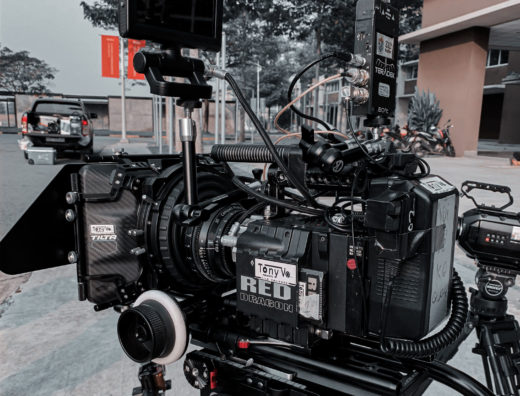
This one’s for anyone who’s ever realised, halfway through a shot, that the single quarter-inch thread that’s rigging the monitor to the camera has come loose. As a result, the apparent slow pan is not so much the artful influence of the practiced hands on the fluid head but an inevitable consequence of a mechanical problem that’s going to become a critical concern during the whip pan we know is coming. When that causes a blown take, it’s irritating. When it causes a bulky piece of machined metal to plummet from a crane and concuss an A-lister, there can be awkward questions to answer.
Of course, it’s not normally that bad. Normally, it’s just an unexpected sensation of the camera getting slightly lighter while some irreplaceable, no-spares-available machine screw trundles inexorably toward a storm drain. Even so, it’s reasonable to wonder why we insist on using one bolt to anchor a foot-long magic arm with a couple of pounds of expensive display technology on the end. It’s one of those ideas which would be laughed at if it were proposed as a new design. It’s also a pretty inadequate way to hold together mission-critical components even when it’s tightened using a wrench, but all too often we’re offered nothing more than an inch-diameter knurled ring and however much grip strength we can muster.
A better kind of rigging
This is a problem of modern cameras, many of which are designed with the expectation that they’ll be extensively rigged as a matter of course. Some companies have been able to address the problem to a degree, giving us clamp designs which offer a much firmer purchase on the quarter-inch thread by providing a sort of wing nut arrangement above the attachment point. Others even a set of holes into which we can stick an allen wrench and get some real torque on the thing, and that’s an enormous improvement. No matter how tightly we do it up, though, a lot of modern rigging still relies on one rather coarse-threaded screw without so much as a nylon locking element to keep a four-figure follow focus setup off the floor. It’s an approach that probably works best on the sort of production that surrounds its camera with enough people to catch things as they fall off.
OK, I exaggerate; problems that severe are rare, even for people who’re forced to rely on auction-site magic arms which cost as much as a candy bar and are about as good at holding things together. Even so, it’s a situation which ought not to exist. Wobbly rigging was, for a long time, foreign to people outside the precarious world of single-camera drama. A traditional, shoulder-mounted newsgathering camera might have a light on the cold shoe mount on its handle and a coil of microphone cable hung on the battery (PAG Superpacks were better cable hooks than any of the modern options), but not much else. The whole system was built around the assumption that the lens mount would not only have to keep the glass in the right place, but also handle the mechanical load imposed on the lens grip. Even once that coil of cable had become a radio mic, a sturdy drop-in bay was quickly standardised, and has become common enough that miniature racks of those bays are sometimes used by location sound recordists to hold radio mic receivers built for news cameras.
Try mounting a radio mic receiver on a cinema camera (if you’re the sort of parvenu who’d want to, of course) and the solution is likely to involve duct tape, velcro, and too many oversized connectors that dangle and clank against the side of the camera. That might be a rare requirement, but monitors video transmitters, timecode transmitters, follow focus receivers and external recorders are everyday. This is why companies like Arri build editions of their cameras which pack all of those things into the chassis, but that’s far from universal, and priced to be least available to the people who may need it most.
An almost-convincing mock-up
This line of thought was provoked by one of those almost-convincing mock-up drawings of a potential future camera from a prominent manufacturer, which suggested that the next release might be a small, simple box camera designed to for rigging into various configurations suitable for the job at hand. The attraction is clear: one investment can be deployed on many jobs, and always in a convenient configuration. Conversation quickly turns, though, to cages, rod clamps, battery mounts and monitors. In practice, the resulting Jenga tower of black-anodised aluminium seems likely to be something of a time sink both in terms of the work required to build it, and the work required to prevent pieces falling off. Not every rig will need a monitor, but when we start talking about cages, which have no purpose other than protecting the camera from damage and attaching things to it. Does that really need to be an accessory?
If there’s a continuum of configurability, with fixed-layout ENG cameras at one end and heavily-rigged cinema cameras at the other, there’s probably a sweet spot of flexibility and reliability somewhere in the middle. Often, people will buy very inexpensive mirrorless cameras early career and spend a while rigging them to do jobs which are, on the face of it, more and more out of that camera’s league. Sometimes, a libation to the gods of duct tape and velcro will be inevitable – but still, let’s not sleepwalk into these situations without first pondering where things might end up when they fall off.
